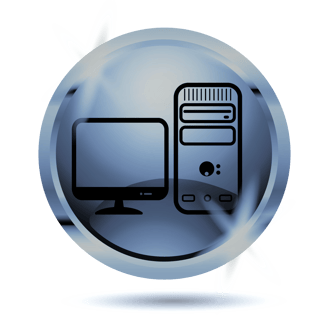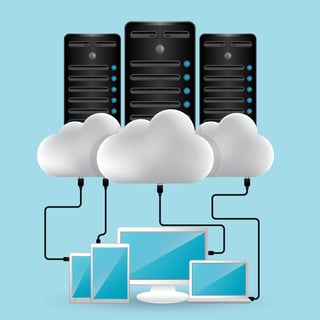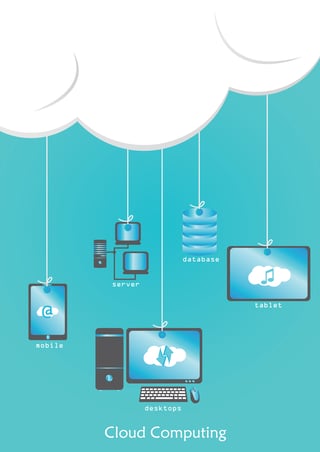While moving to a cloud based subscription service has gained momentum with our nonprofit customers in recent years, it is not always the right fit for everyone. There are pros and cons to each deployment option and determining which is the best solution for your own unique organizational needs is an important part of your software evaluation process.
One of the first things to do, when considering new software, is to understand the various deployment options that are available for the software you are evaluating. Not every software will be available in every deployment choice. This post will highlight some of the options available for the Abila MIP Fund AccountingTM software, but you will need to determine which ones are applicable to the software you are reviewing.
Some of the possible deployment options to consider include:
- On Premise Perpetual
- On Premise Subscription
- Third Party Hosted
- Cloud Subscription
Which option is right for you? Below are more details on what each deployment option means and some of the things to consider. We've highlighted a few of the pros and cons that we often see with each deployment method, but this outline is just an overview and actually benefits or constraints may vary. It is important to always do a thorough analysis based on your own organizational needs so you can develop your own pro/con list to help you make the best decision possible.
On Premise Perpetual
This option is probably one you're familiar with as it was the deployment of choice prior to the move to the cloud. With on premise perpetual, you purchase the software up front and pay an annual maintenance and support fee which provides access to support services and software updates. You install the software on your own server and manage all the setup as well as maintain the necessary hardware. There are usually system specifications from the software vendor that outline what you need for hardware as well as any supporting software requirements such as the operating system. In this scenario, you own the software.

Pros
- You own the software. Even if you stop paying your annual maintenance and support, you can still use the software although you won't have access to the latest updates or support services should you encounter any issues.
- You can implement and control your own security measures.
- Overall long term costs tend to be lower after a higher initial investment as your only ongoing software costs are the annual maintenance and support fees. However, be sure to factor in your hardware expenses when doing a cost comparison.
Cons
- You need IT expertise to manage the software and hardware infrastructure.
- You need to install and configure the software prior to using.
- You need to install future updates to the software yourself. This means:
- staying on top of upgrading your server (if needed) to support the latest version,
- scheduling down time so you can perform the upgrade, and
- performing a backup in case something goes wrong during the upgrade process.
- Often there are more limited remote access options.
On Premise Subscription
While you would still need the hardware infrastructure with this option in order to install the software locally on your own server, you would reduce your initial upfront software cost by instead paying a monthly subscription fee to use the software. With this scenario there is no annual maintenance and support cost, as your monthly fee generally covers support services as well as software upgrades.

Pros
- You can implement your own security measures.
- There is no large upfront investment costs for the software although there may be some costs to setup the necessary hardware. Also, some subscription services require a quarterly or annual payment rather than monthly so be sure to check with the software vendor as this could negate the monthly cost advantage.
- Your monhtly subscription allows you access to the latest updates so you can remain current.
Cons
- You still need your own server.
- You need IT expertise to manage the software and hardware infrastructure.
- You need to install and configure the software after purchase.
- You need to install updates to the software yourself.
- Often there are more limited remote access options.
Third Party Hosting
With third party hosting, you can opt to purchase a perpetual license or opt to do the monthly subscription service. The only difference is that instead of having the hardware onsite at your location and managing the software yourself, you would contract with a third party hosting service to manage the software for you. You would incur an additional hosting cost above any software perpetual or subscription fees, to cover the cost of the hosting service.
 Pros
Pros
- You have anytime, anywhere access to the software.
- Depending on the hosting provider, they may be able to handle the installation of the software updates for you.
- You will need to choose a third party provider wisely, but the best ones will also have extensive security and redundancy built into their service.
- You can often host other software with the third party provider.
Cons
- You are paying two fees: one for the software, and one for the hosting service.
- You are still using an on premise based software in that is not specifically designed for the cloud.
Cloud Subscription
In this deployment, you would pay a monthly subscription cost and the vendor would handle all of the cloud hosting components. The software will be automatically updated as new releases come out.

- You can login and start using the software right away. You may need to tweak a few personalized user settings when accessing for the first time, but there is no complicated installation and setup.
- There are no infrastructure costs. The only requirement for accessing a cloud subscription service is a web browser. There may be some system recommendations as to which browser/version, and recommended processing speeds but there are no major hardware needs with this deployment.
- There are no large upfront investment costs for the software. You monthly subscription payments help spread out the costs. Although, as previously noted, some subscription services require a quarterly or annual payment rather than monthly so be sure to check with the software vendor as this could negate the monthly cost advantage.
- All updates are handled by the software provider and updates are automatically applied to the software so you are always current with the latest version of the software.
- Software subscriptions are usually easily scalable. An organization can add as many additional users as they needed instantly and without stress.
- You have anytime, anywhere access to the software. This can be a huge benefit if you have remote workers, or employees that travel and still need access to the software.
Cons
- You do not own the software. If you stop paying the monthly subscription fee, you will no longer have access to the software. Generally, you DO own your own data and should be able to get a backup for your information before halting the subscription service.
- You do not have the ability to schedule your updates when it is convenient for your staff. You should get plenty of notice from the vendor as to when updates are being applied, and they are usually done at off-hours and less busy times, so you can plan around it, but you cannot control when they are done.
- You may need to work with the vendor to setup and grant access to new users as there may be additional cloud provisioning beyond just setting up the user in the software.
- Once you sign a subscription contract you are generally committed to the service for a specified number of months and canceling before the end of the term can incur a penalty. Be sure you understand the cancellation terms for any subscription services you are evaluating.
CONCLUSION:
Each deployment option has pros and cons. Some of the benefits may not be important to your organization, and some of the cons may not be a detriment. The right decision will need to be based on your organization's specific, individual needs.
Soft Trac is a woman-owned business and accomplished team of nonprofit software consultants. We believe in making nonprofits "do good" better. For more information on any of the topics discussed in this blog or to learn more about the software products and services we offer, please visit our CONTACT page.
Copyright © 2017 Abila, Inc. All Rights Reserved. Abila FR50™, Abila MIP Fund Accounting™, and True Fund Accounting™ (Any other products they represent) are trademarks and registered trademarks of Abila, Inc. in the United States and other countries. All other product names mentioned herein are the trademarks of their respective owners.












